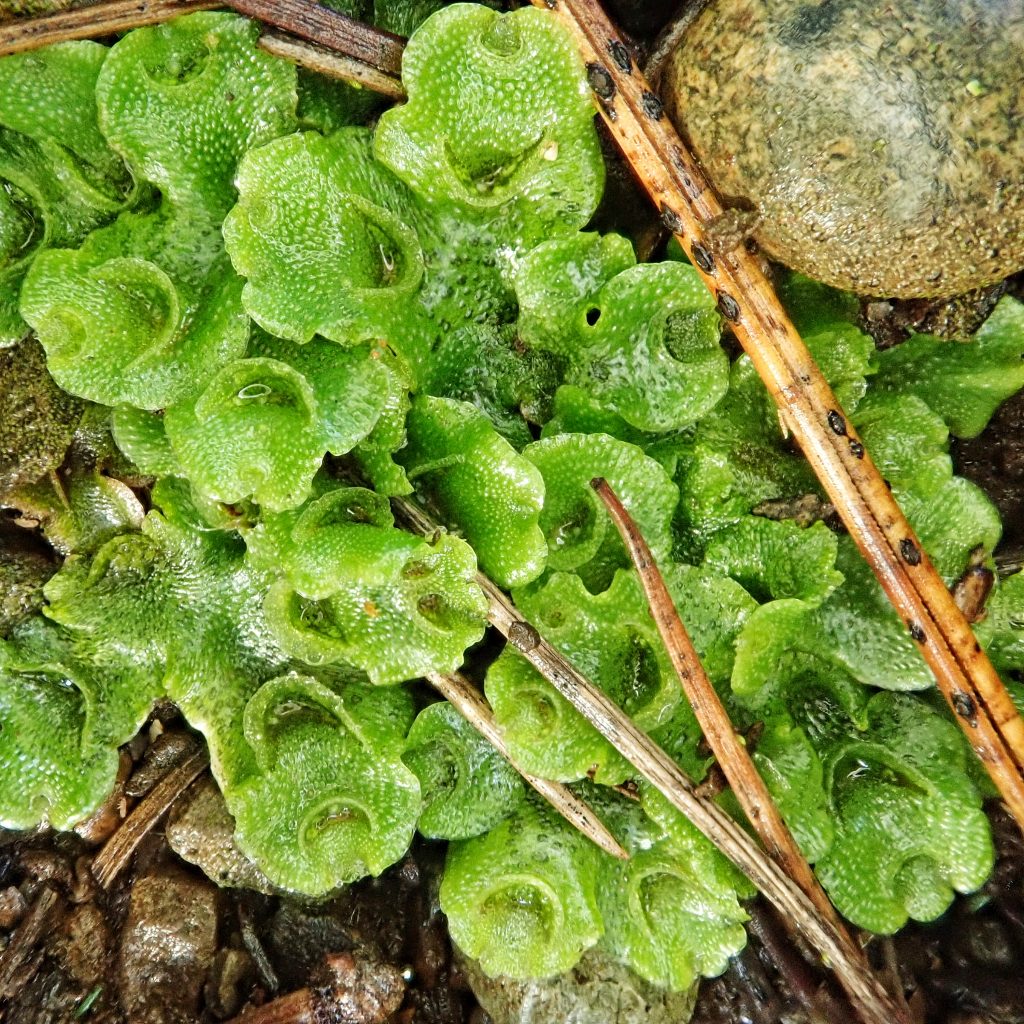
I am quite fond of this little non-native liverwort. Because of its abundance around landscape plantings it was the first liverwort I positively identified. And it is one of three liverworts I can not only immediately identify, but I can do so from a standing position, though I frequently feel the need to go down to my knees to examine it.
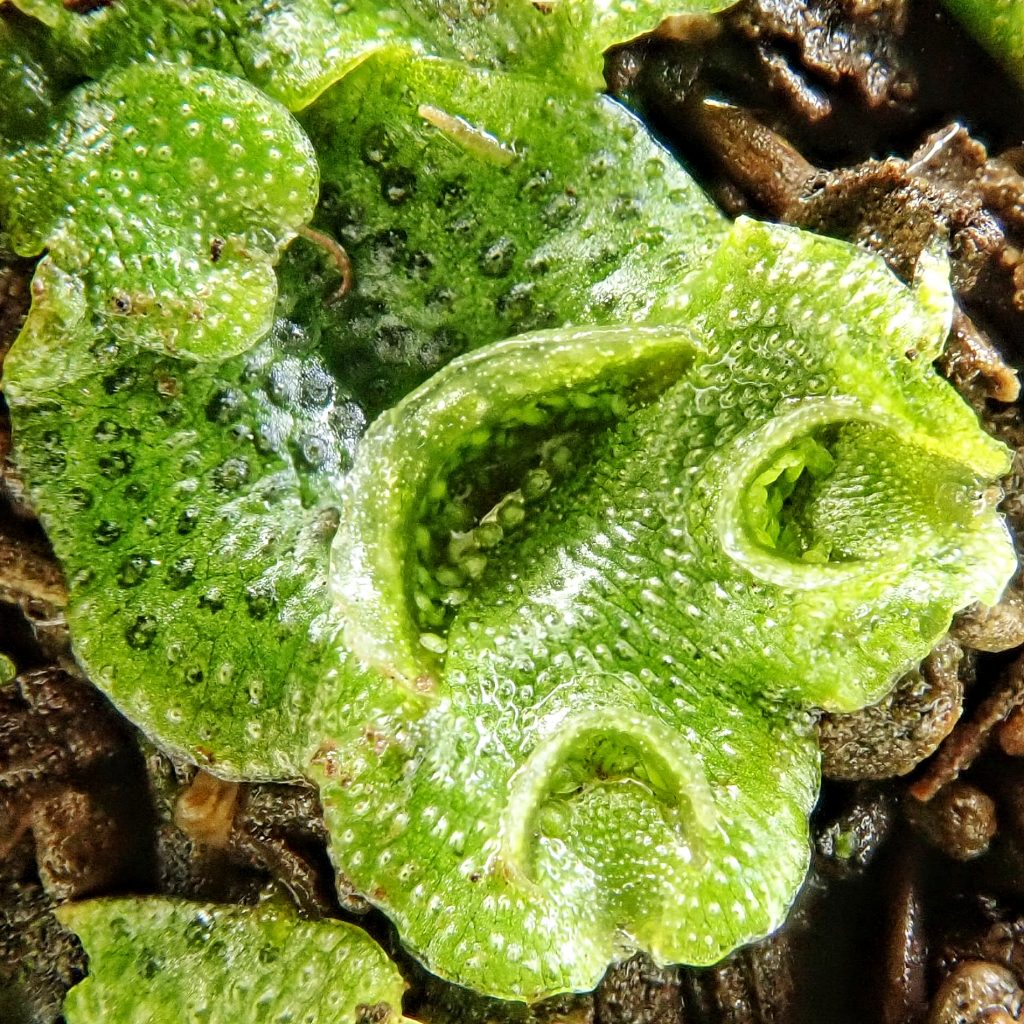
The reason it is so distinctive, and the draw to view it closely, is the adorable little crescent shaped gemma cups. No other species of liverwort that I know of has crescent shaped gemma cups, (one of the reasons Lunularia is a monotypic genus), though Marchantia does have round ones. Gemma are tiny (.3mm for this species), disc shaped vegetative propagules (little baby clones), that form in the protection of these cups and are splashed out by raindrops.
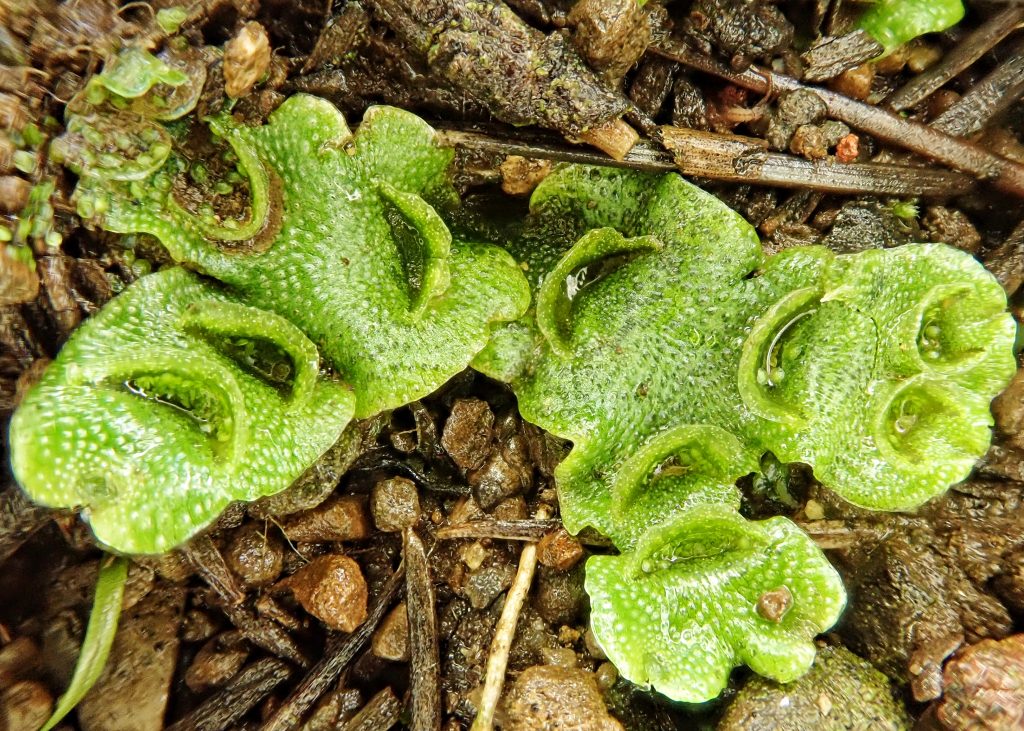
In combination with the saurian looking thalli, these gemma cups give this liverwort a very primitive vibe, and I often feel as though I could be looking at the first plant to colonize the land. It is very possible that that pioneer was more closely ancestral to liverworts than to the other non-vascular plants.
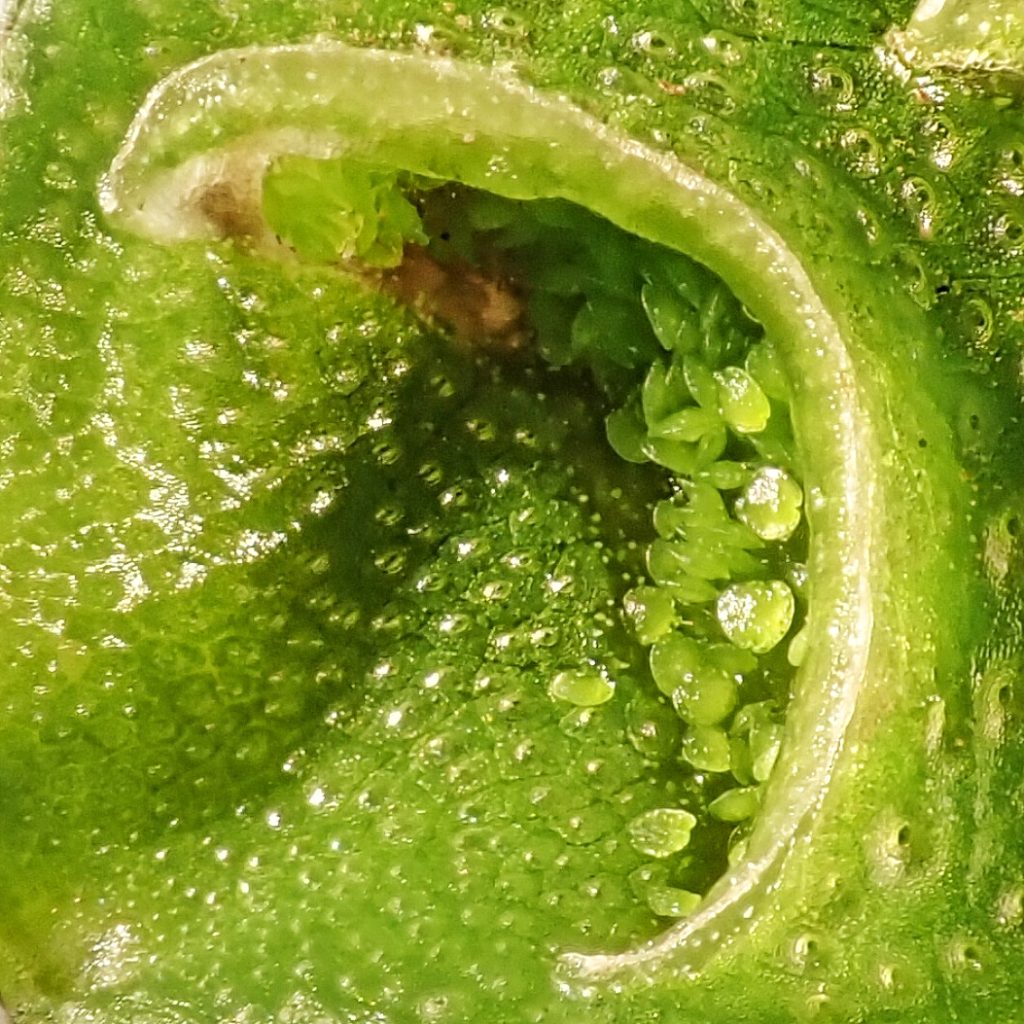
Once I’d seen and identified Lunularia cruciata, I started seeing it everywhere! Unless they are vigorously weeded, nearly every landscape planting has a patch of this liverwort, and sometimes, especially in concert with Marchantia latifolia (which I hope to profile tomorrow), they form large, lovely textured carpets of ground cover, adding beauty and diversity to bare expanses of dirt, and helping to prevent erosion and its concomitant silting of any nearby watercourses.
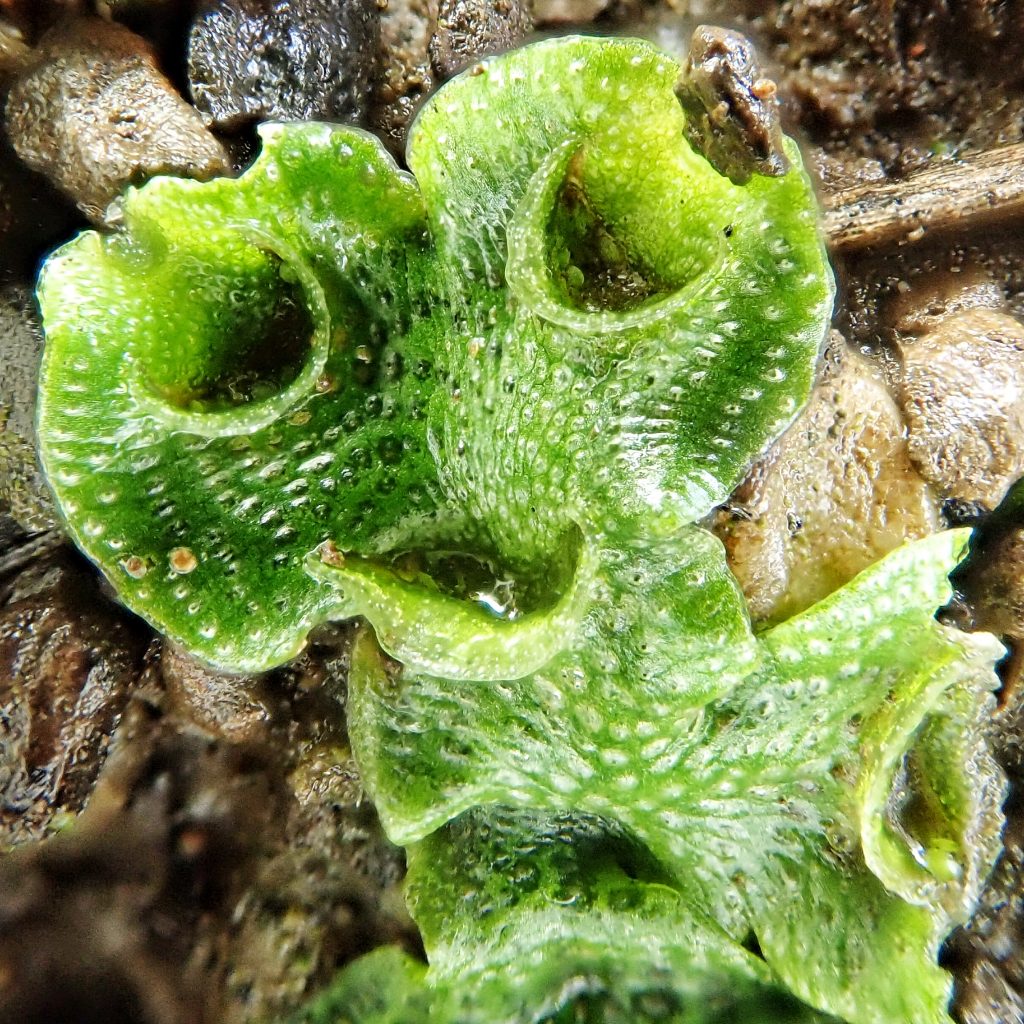
And, given these benefits, and the fact that liverworts not only don’t compete with vascular plants (since they have no roots with which to mine the minerals from the soil), but do help to maintain the moisture content of the soil, I am somewhat mystified as to why they would be targeted in rigorously weeded areas. They seem to me like a very beneficial addition to any type of gardened area.
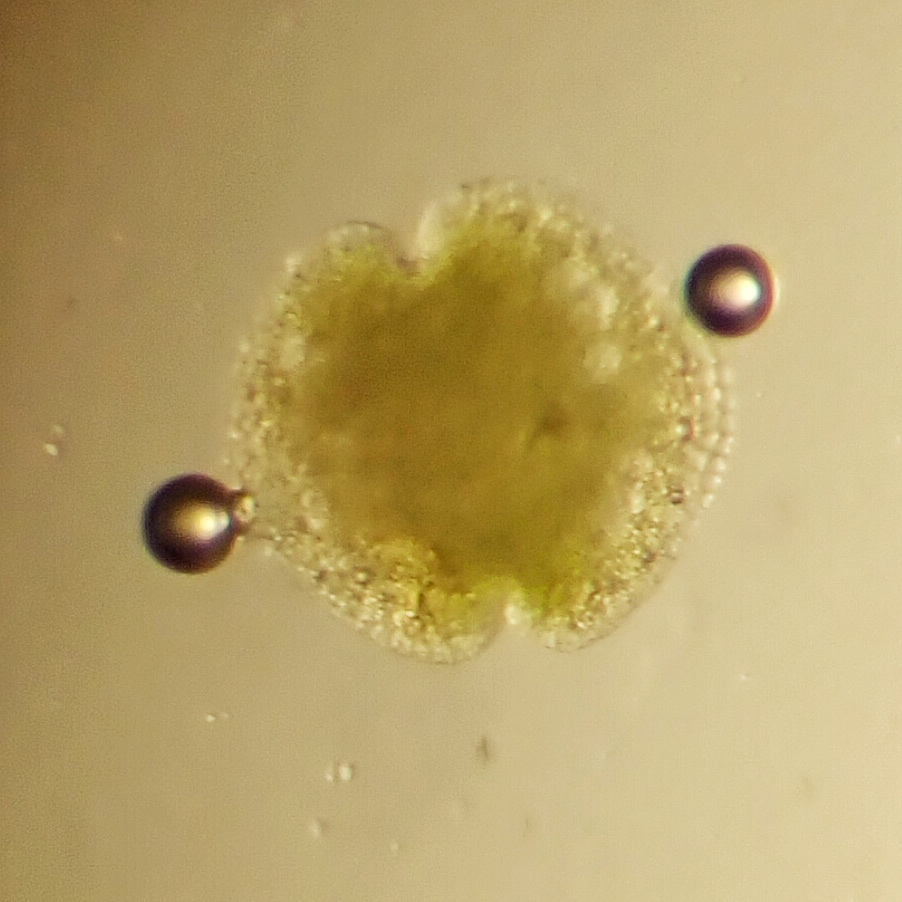
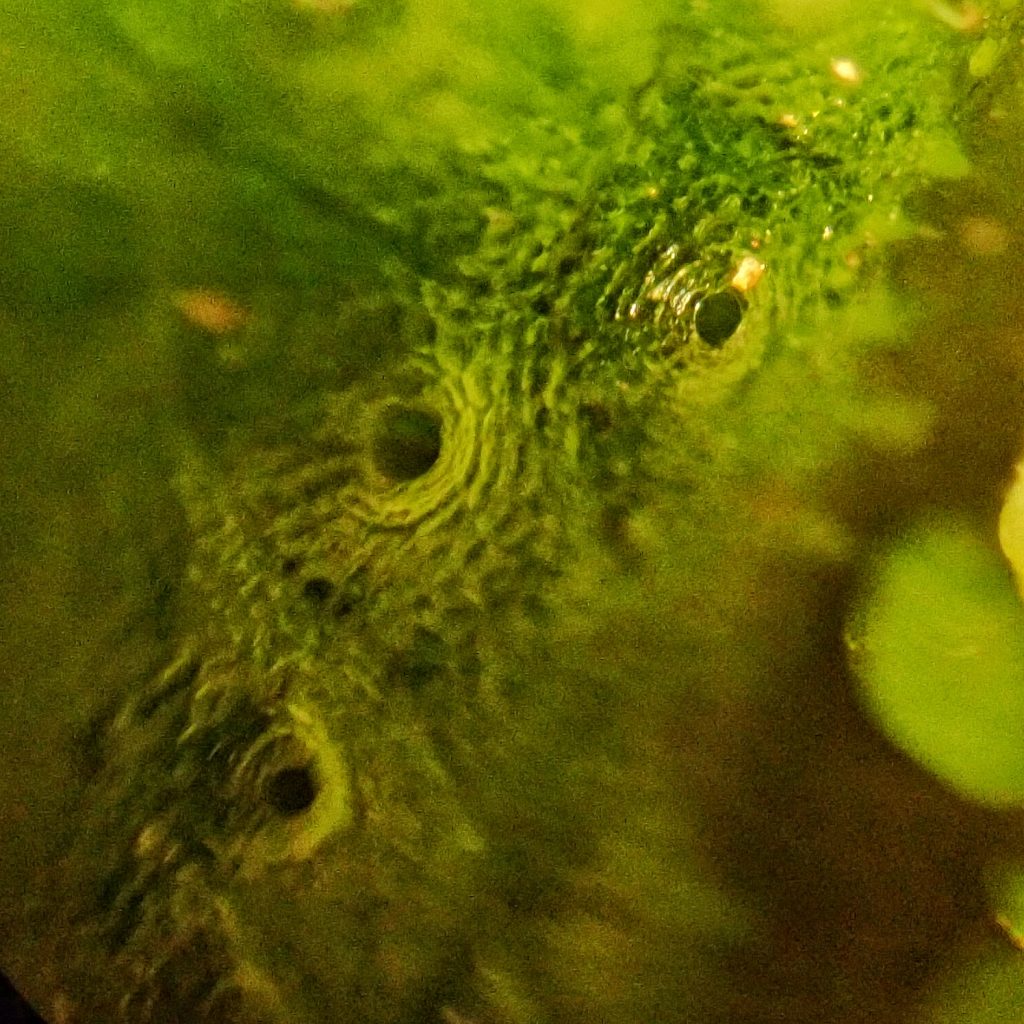
Description-Deep olive to yellowish green thallose liverwort with many obvious pores; thalli small (up to 7mm) but may form large mats; has abundant, crescent shaped gemma cups, and disc shaped gemmae.
Similar species– No other liverwort in our region has crescent shaped gemma cups.
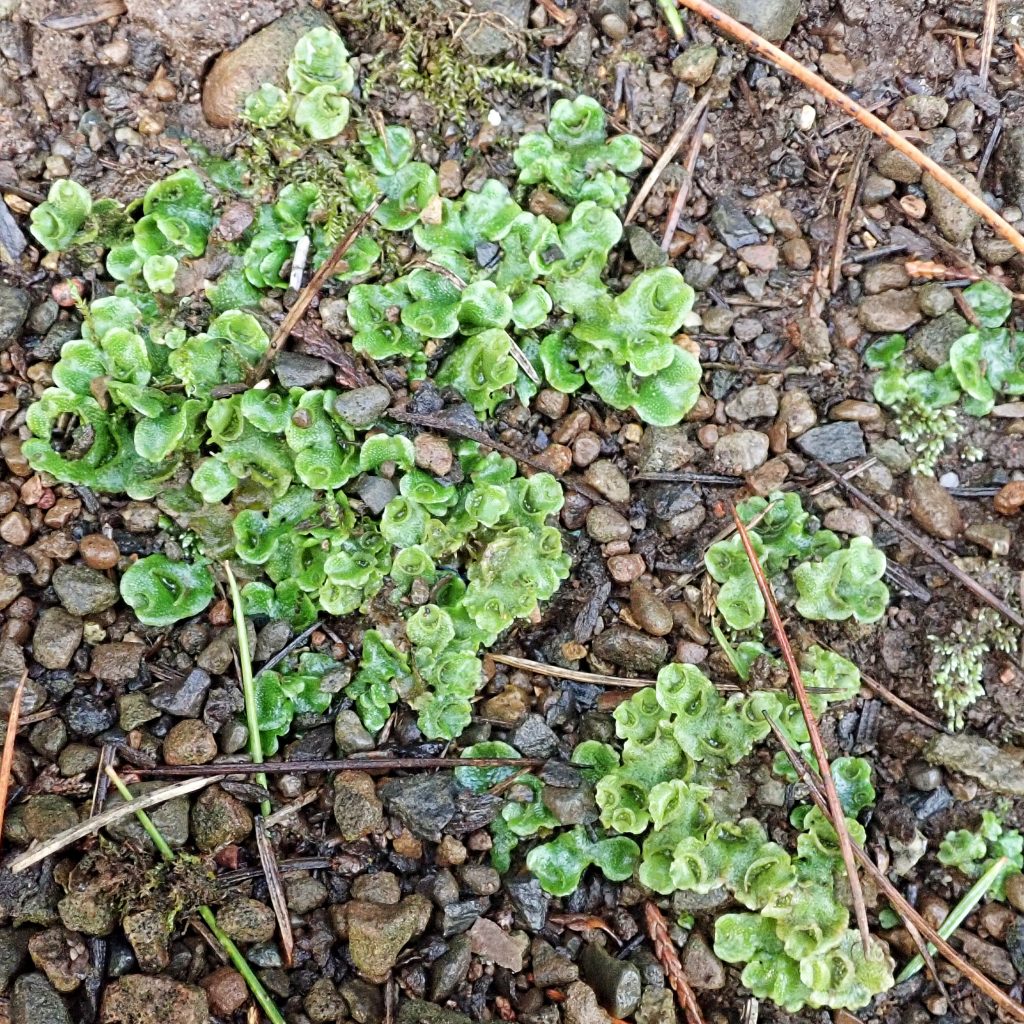
Habitat-Moist, rich, disturbed ground, especially around plantings; usually introduced by horticultural and landscaping features; frequent greenhouse pest.
Range– Cosmopolitan introduced species; common in all urban areas
Reproductive timing-Spring; rare.
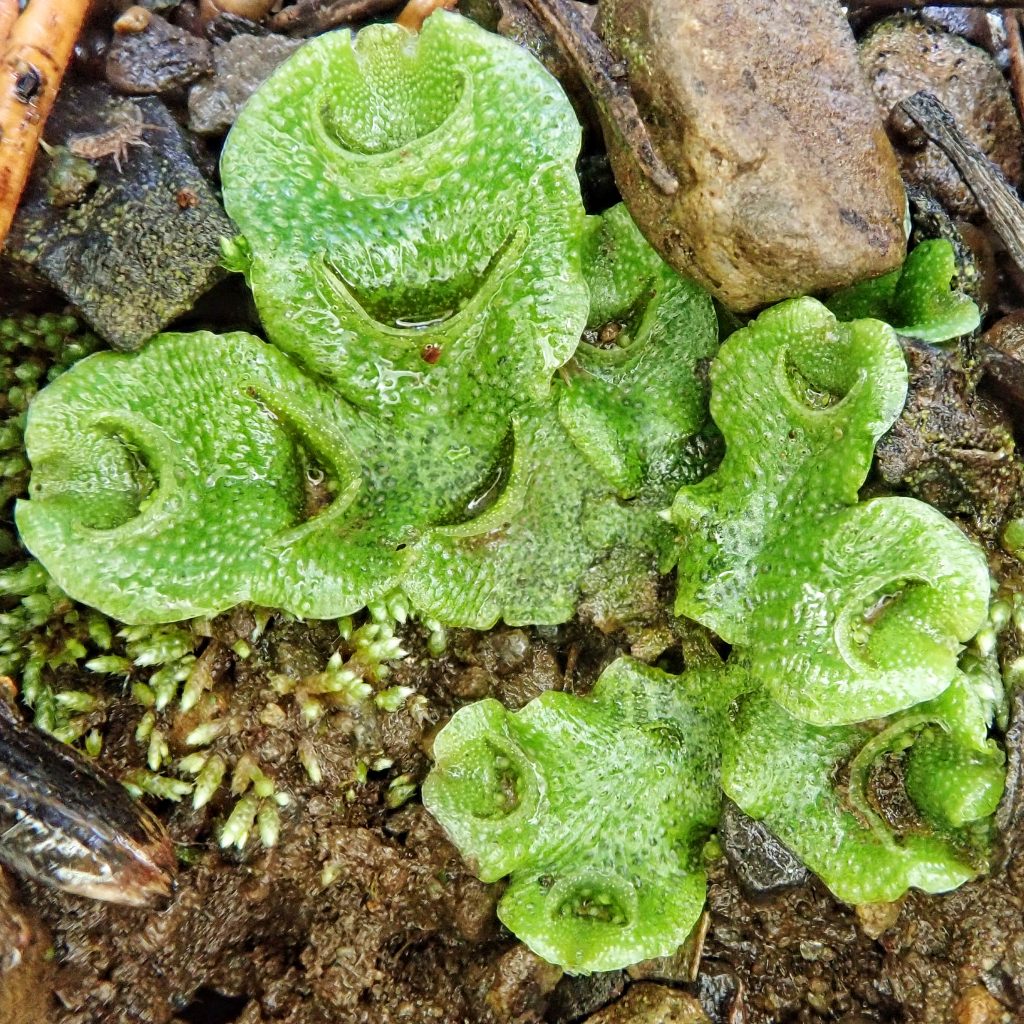
Etymology of names– Lunularia is from Latin and means ‘bent like a small half moon’, and refers to the crescent shaped gemma cups. The specific epithet cruciata is from the Latin for ‘like a cross’, which refers to the shape of the stalk of the sporophyte.
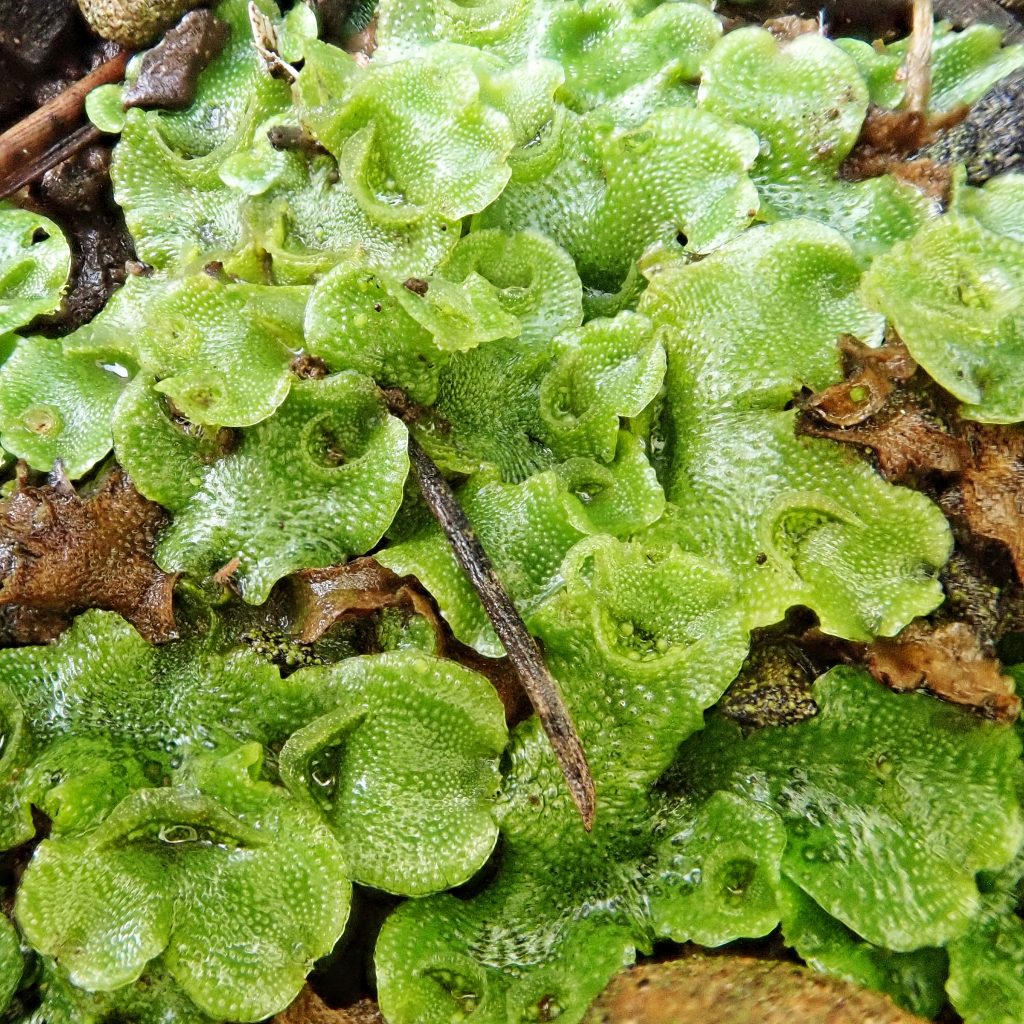
https://websites.rbge.org.uk/bbs/Activities/liverworts/Lunularia%20cruciata.pdf
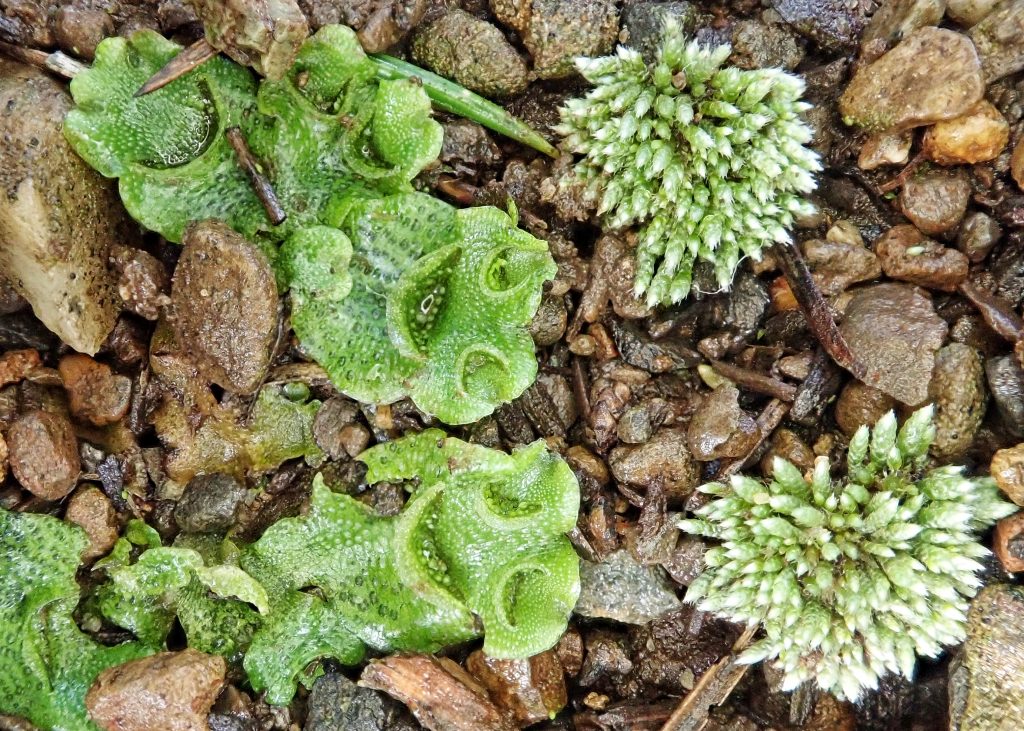
https://en.m.wikipedia.org/wiki/Lunularia
https://www.naturespot.org.uk/species/crescent-cup-liverwort
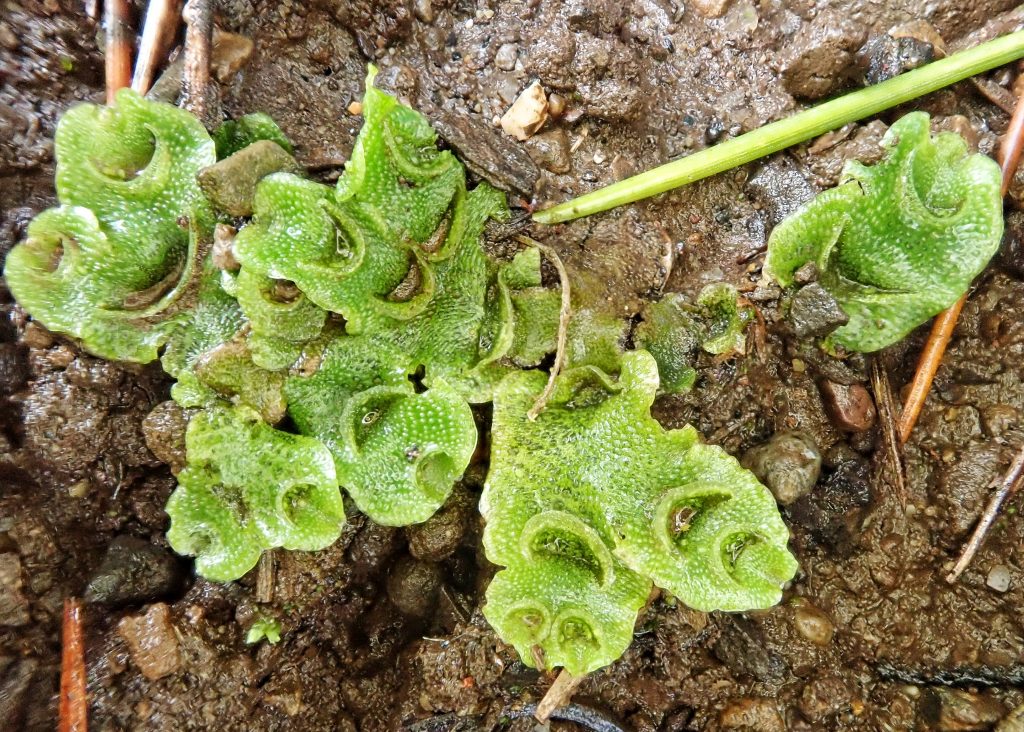
1 thought on “Lunularia cruciata”